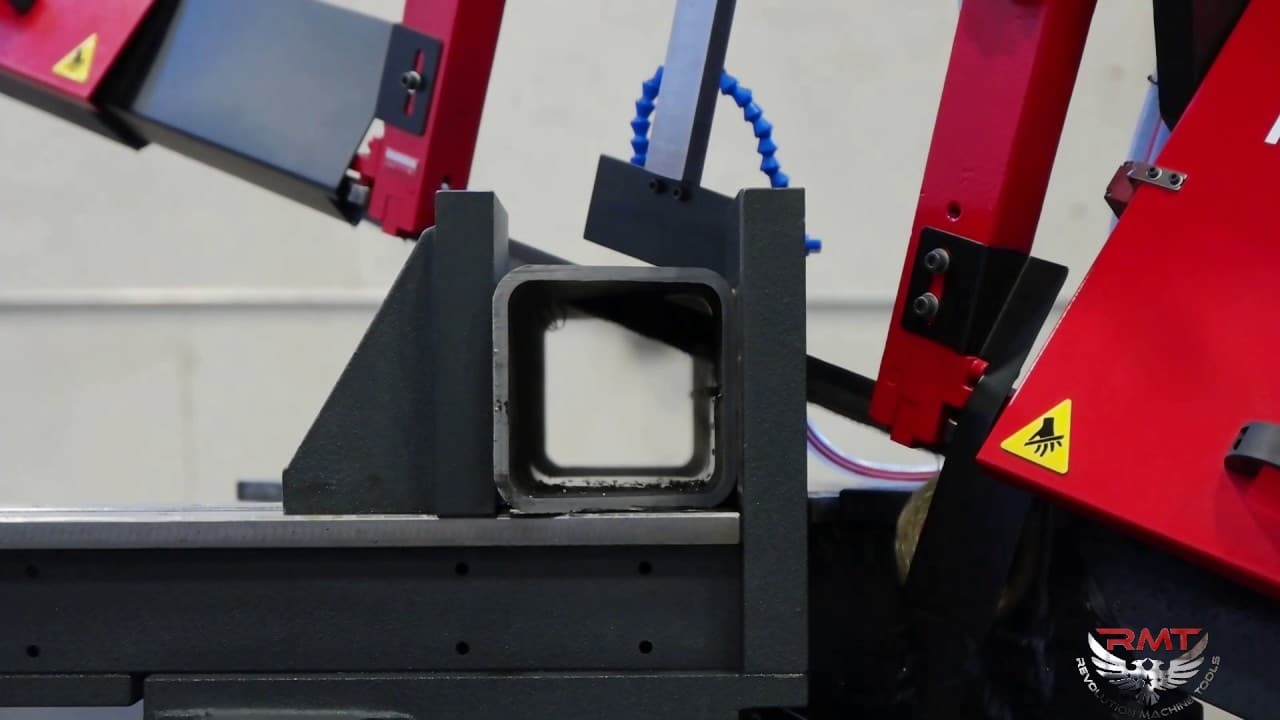Why Break in Your New Blades?
It almost sounds contradictory—a user needs to put wear and tear on their new band saw blades to break them in so that they don’t break due to wear and tear during usage.
In our “on demand” modern world of ready-to-eat, plug-and-play, use-right-out-of-the-box commodities, taking time to prepare a product to be used can bring out an impatient resentment in many. However, it’s a time-honored tradition that the best things in life need a little prep time to get just right.
Take baseball, for example. Every player, whether in the big leagues or a neighborhood softball game, soon learns that he or she needs to break in their glove so that it more exactly fits their hand—and the ball—without any cumbersome stiffness. Likewise, composite bats need to be broken in to loosen the interior resin to result in better impacts during play.
Every workman, hiker and especially cowboy knows that you have to break your boots in to get them to fit right and not hurt during regular wear. In the case of cowboy boots, it can take up to three weeks to get the boots broken in correctly, but people take the time so that they can enjoy the benefits of wearing them.
From car engines to metalworking equipment, many machines require a break-in period so that they work out the kinks and can perform better over the long haul. Likewise, many types of tooling benefit from going through a break-in process, with the band saw blade being at the top of the list.
A common frustration in the machine tool and metal fabrication industry is how fast a metal-cutting band saw can go through blades. Some users blame the saw, some the blade manufacturer, but more often than not, it is they, themselves, who are most responsible.
Every band saw blade needs to be broken in each time before use. Every single blade, each and every time. It takes time to break in a blade but adding up the time it takes to change out each broken blade—not to mention the cost in time and money to get replacement blades—the savings in production time will become apparent in a matter of days.
A new blade that hasn’t been broken in can potentially last only an hour or so, but a blade that has been correctly broken in can easily last over a hundred hours. Most users find that broken-in blades last around five times longer than blades they haven’t prepped in this way. Even when faced with critical deadlines, no responsible operator or manager would choose to not break in a new band saw blade, not when the potential costs of damaged workpieces or downtime to change out blades is factored into the equation.
Best Practices for Breaking in a Band Saw Blade
Using a razor-like instrument is useful in surgery, shaving and cutting paper, but it isn’t needed in metal cutting, which is a slow, persistent process. Yet brand-new band saw blades arriving fresh from the factory have teeth that are razor-sharp.
The process of breaking in a band saw blade basically involves running the blade at a reduced feed pressure during the first cuts. This gradually smooths the ultra-sharp leading edges of each tooth to a very fine radius, allowing them to more easily shear good chips away from later workpieces.
Without performing this honing process, rough spots can violently rip off during regular use, often taking bigger chunks of the blade with them. Even microscopic damage can grow rapidly into fractures that will result in broken blades. Breaking in a blade deburrs it and removes these tiny imperfections.
Each band saw blade manufacturer will have a recommended break-in procedure for their particular product, but here are some general guidelines that can help you keep your blades running smooth for a longer duration.
- Choose a solid workpiece to start with, like round bar. (Avoid pieces with drastically shifting geometries during the breaking-in stage, such as angle iron or I-beams.)
- Make sure your workpiece is clamped tightly and the vice is square.
- Set the speed of the blade itself in accordance with the recommended speed for the size and type of material you are cutting.
- Run at a reduced down feed rate of 50% or lower (down to 20%) for mild steel and softer metals like aluminum.
- Run at about 75% of the normal feed rate for harder materials like stainless steel and nickel-based alloys (you need more force with them as they tend to harden quickly).
- Keep the feed pressure reduced for at least the first 25 square inches of cutting. (Normally the first 50 to 75 square inches of hard materials and the first 100 to 150 square inches of softer metals.)
- Make at least five or six slow cuts through the metal, probably only cutting a small 1/8″ thick wafer to save material.
- Gradually increase your down feed pressure with each successive cut after the initial cutting has been done until you have reached the recommended rate.
- Increase the down speed rate slowly to avoid creating vibrations or noise along the blade. Making slight adjustments to band speed may also help reduce vibrations.
- Watch for chips to form as you are increasing your down feed speed. A good, curly chip coming off of the material is a telltale sign of optimum down feed force.
Taking the time to break-in your blade will also actually harden it! This process heat-treats your blade so that you are using a longer-lasting tempered tool, one that stays sharper longer and gives you more consistent cuts.
The proof is in the pudding—if you aren’t now breaking in your new saw blades, please give it a try and see for yourself. While the cost of prepping blades can add up, making them last longer gives you a lower cost per cut in the long run.
It’s Not You, It’s Me
Bad cuts and broken blades aren’t always the fault of an improperly broken-in band saw blade. When problems arise, after checking the blade also check all aspects of the saw to make sure things are running as they should.
- If band tension is too high or guides are worn, saw blades can more easily brake.
- A malfunctioning chip brush can result in overloaded gullets between the teeth, causing rougher cuts, as well as allowing teeth to strip or dull prematurely.
- Incorrect coolant concentration or flow can dull teeth earlier than normal or strip them off.
- An incorrect feed rate and/or blade speed can result in rough or crooked cuts and can affect the teeth by either breaking them off or quickly dulling them.
- Out-of-alignment or too wide guide arms can cause warped cuts and band breakage.
- Damaged rollers or carbide guides are often responsible for crooked cuts.
- An incorrectly adjusted vise can be the source of many problems. An improperly secured workpiece in a loose vise can produce tooth stripping, while an out-of-square vise is a common cause of a non-straight cut.
Good upkeep, cleaning, maintenance and alignment of your band saw can go a long way in keeping your cutting relatively problem-free.
Slow and Steady Wins the Race
Shops that blindly focus on production at all costs without due consideration given to maintenance and prep time will find that their production is drastically being negatively affected due to their negligence.
The goal of having a band saw on the production floor is to keep it in operation, so the idea of breaking in blades may seem counter-intuitive to that. High efficiency and high productivity go hand-in-hand, however, so every blade should be properly prepped to ensure maximum cutting quality over the expected lifespan of the blade. Slowing down production a little to break in a blade can prevent more serious interruptions down the road.







